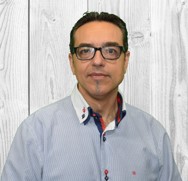
José Fuentes
Sailing the V with an intelligent compass: Engineering digitalization through the automatization of traceability, reuse and early quality in the development cycle.
The REUSE Company gadly participated in the 2021 South European Systems Engineering Tour from May 18 – 20. Our Chief Commercial Officer, José Fuentes imparted a presentation regarding Sailing the V with a intelligent compass, provided a sponsors demo, and participated in the event’s contact corners. Specifically, José Fuentes’ discourse explored how Artificial Intelligence can be applied to leverage activities all along the V model and thus meet demanding criteria that projects usually face. For this purpose, José used The REUSE Company’s SES ENGINEERING Studio.
For more information concerning the event’s agenda and the participating sponsors, visit SESE Tour 2021.
Presentation Abstract
This presentation shows how Artificial Intelligence can be applied to leverage activities all along the “V” model, thus making it feasible to meet the demanding success criteria that these projects normally face.
While we cannot say that all you need to do Systems Engineering is a good tool, but clearly process and skills need to be empowered by a set of suitable tools. Systems Engineering is aiming at addressing complex problems: the outcome of these projects is increasingly complicated, demanding the integration of multiple systems into a System of Systems. This makes that this kind of project is not only dealing with an enormous amount of requirements, also these requirements are prone to evolution and change. Furthermore, the ecosystems of tools required to fully digitalize such projects across the “V” model is also incredibly large, demanding the connection of tools in a toolchain that were not originally designed to be connected. The underlying necessity of exchanging and linking different types of artifacts like textual requirements, logical models, physical models, quality metrics, etc. keeping consistency really represents a challenge to boost the digitalization of the engineering lifecycle through the understanding and reuse of embedding knowledge. How can we reconcile this lifecycle conceptualization and technical environment to deliver timely and cost-effective systems?
